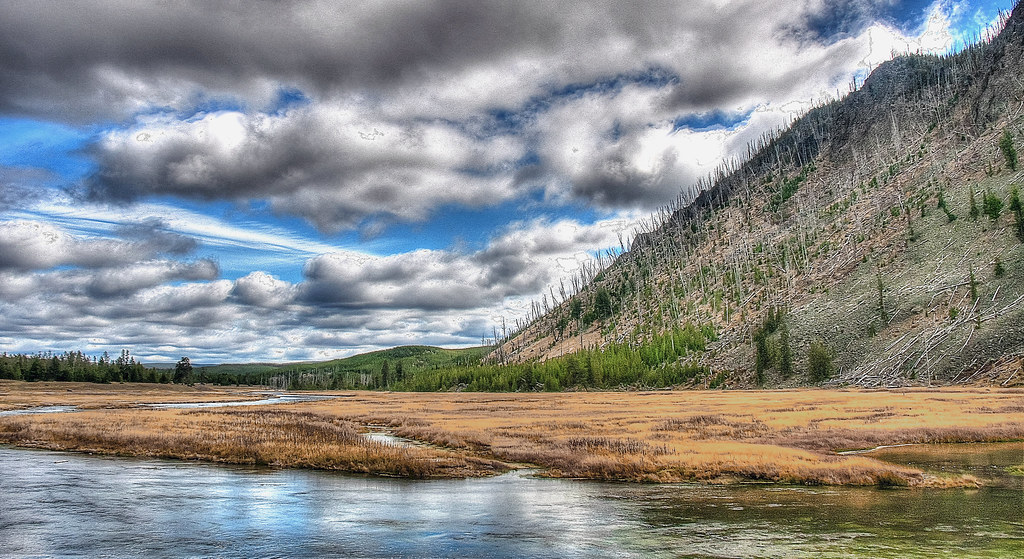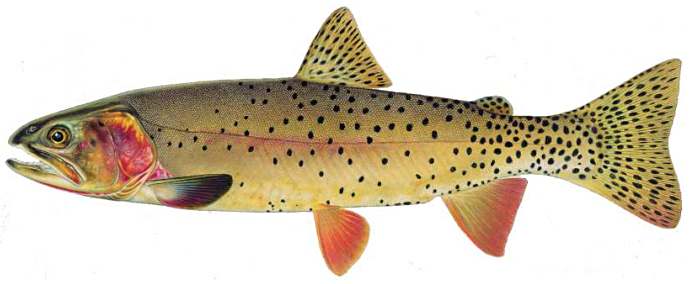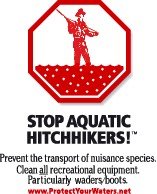A VISITATION
Very Dark Room
slide shows for all
 |
| EAGER ATTENDEES ENTHRALLED IN ANTICIPATION |
-------
 .. National Park Service speakers regaled and lectured a not quite standing room only crowd in West Yellowstone.
.. National Park Service speakers regaled and lectured a not quite standing room only crowd in West Yellowstone... Exposition of the Native Fish Conservation Program was the topic for a series of slide presentations featuring efforts on Yellowstone Lake, The Northeast Fishery, and the West Side Fishery.
 |
| AVAILABLE FROM NPS |
.. The commercial fishing contracts to curtail the population explosion of Lake Trout in Yellowstone Lake are anticipated to continue to the tune of $1,000,000.00/yr. Funding support is anticipated to continue with the newly amalgamated Yellowstone Park Foundation-Yellowstone Association (LINK A).
.. Increases in catch and kill numbers through the years have shown success that is correlated with length of nets employed.
.. More nets=more dead Lake Trout. Exploration of chemical killing of eggs and fry continue to be a research focus for the known spawning areas.
.. Large numbers of Lake Trout hiding from the gill nets have been found in the South Arm of Yellowstone Lake. Previously found concentrations have continued to be the cynosure of netting including those populations in West Thumb.
 |
| REGULATIONS: ABOUT THE SAME |
.. Rearrangement of fish populations, poison, barrier construction, regulation modifications, and scientific review continue too be the focus of the program.
 |
| SODA BUTTE CREEK |
.. New concerns about climate change have been introduced to the program and the thrust is relocation of, (or establishment of,) populations of fish in areas most likely to provide survival of cold water species in periods of climatic warming.
 |
| BROOKIE PARADISE |
.. The subterranean stretches of Cougar Creek are being investigated as barriers to fish migration which places this little stream on the potential hit list for future management.
 |
| MUSHROOM AND SWISS |
.. The pubs enjoyed some fish talk last night. Better than the coffee provided at the informative gathering.
-------
 |
| BROOKIE HANGOUT |
 |
| A GRAYLING TANGLE |
**In 1921, U.S. Fish Commission personnel stocked the fishless Grebe Lake with the Montana strain of Thymallus arcticus montanus, a lacustrine form of Arctic Grayling.
.. The initial introduction came from Georgetown Lake near Anaconda, Montana.
.. It is believed that the fluvial form of Arctic Grayling was native to the MADISON RIVER and the GIBBON RIVER below Gibbon Falls.
.. In an effort to re-establish Grayling in western states, over 72 million Grayling eggs were harvested from GREBE LAKE between 1931 and 1956 and distributed to hatcheries.
.. Many lake dwelling Grayling populations in the west can be genetically traced to these stocks.
.. GREBE LAKE was closed to fishing until 1944 because of the fish culture operations at the lake.
.. Nearby WOLF LAKE and CASCADE LAKE also contain some Grayling as well.
.. This is an interesting exercise in the preservation of an introduced species, (the Lacustrine GRAYLING,) even as the indigenous species, (the Fluvial GRAYLING,) is being reintroduced and established elsewhere, (in GRAYLING CREEK.)
.. Native Fish Preservation?
THEY SEEM TO KNOW THE DIFFERENCE





.jpg)




